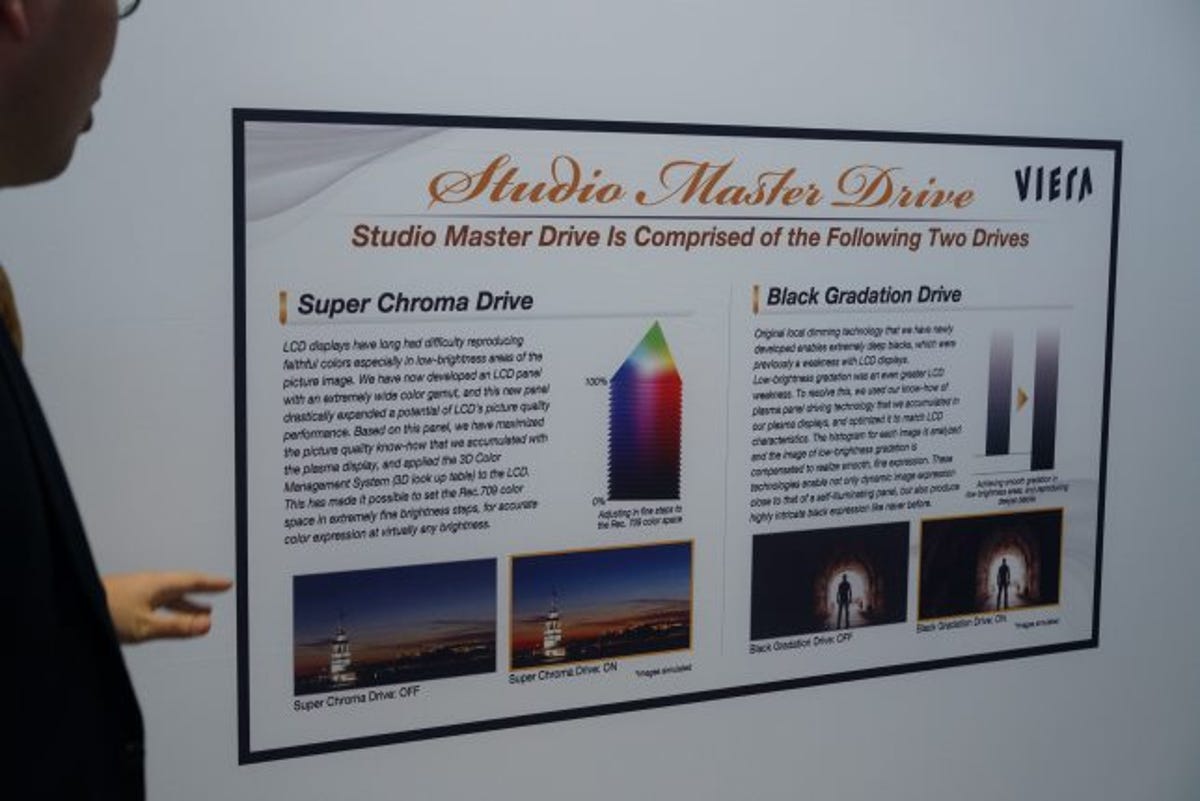LAS VEGAS — Following the demise of its plasma division last year, Panasonic has expressed its enthusiasm for the potential of LCD technology via its prototype Studio Master Drive 4K LED TV.
At CES 2014, Panasonic offered attendees a look at its latest prototype — a local-dimming 4K LED TV — that it claimed delivered pictures as good as last year’s amazing ZT60 plasma. In order to validate this claim, the company exhibited the TV in darkness side-by-side with the ZT60 as well as last year’s 4K TV, the WT600.
While the demo scenes from the animated movie “The Secret World of Arrietty” weren’t all that convincing with a lack of true blacks, it wasn’t until the company showed off one of our favorite black-level tests, the hilltop scene from “Harry Potter” (“Deathly Hallows Part II,” Chapter 12, 45:55), that the differences between the three TVs emerged. The WT600 showed a distinct lack of contrast, with the faces on the mountain failing to appear from under the darkness of the image, but the ZT60 and the prototype looked very similar with deep blacks and great low-level shadow detail — the faces also popped. The black bars on the prototype also looked black. There was a distinct lack of blooming or sudden changes in the backlight which makes this one of the best and most subtle dimming systems I’ve ever seen.


Ty Pendlebury/CNET
How does Panasonic achieve this kind of picture wizardry? The company says the TV uses technology from the now-defunct plasma range to analyze black-level signals and then optimize the signal to reproduce shadow detail without sacrificing the brightness of highlights. For example, when most backlight-dimming TVs reproduce the moon in a night sky it will reduce the backlight to get black blacks but the moon will look dimmer than on a plasma. Panasonic’s technology could potentially alleviate this problem.
Panasonic claims that the panel is also able to reproduce a wider range of colors than most LCDs with a technology it calls Super Chroma Drive. Again using plasma smarts the panel utilizes a “3D Color Management” system to better conform to the existing Rec. 709 standard, asDavid Mackenzie at HDTV Test explains here .
Given the potential of this technology, I am of course eager to test it in a real-world situation. While there are rumors the TV will come out in 2014, Panasonic representatives have told CNET that “we have not released any official information on this at this point.” Could this technology mitigate the sadness we feel at what is essentially plasma’s passing? I think the ZT60 would have liked us to find something that makes us truly happy, and Panasonic itself may be the one to make this happen.




